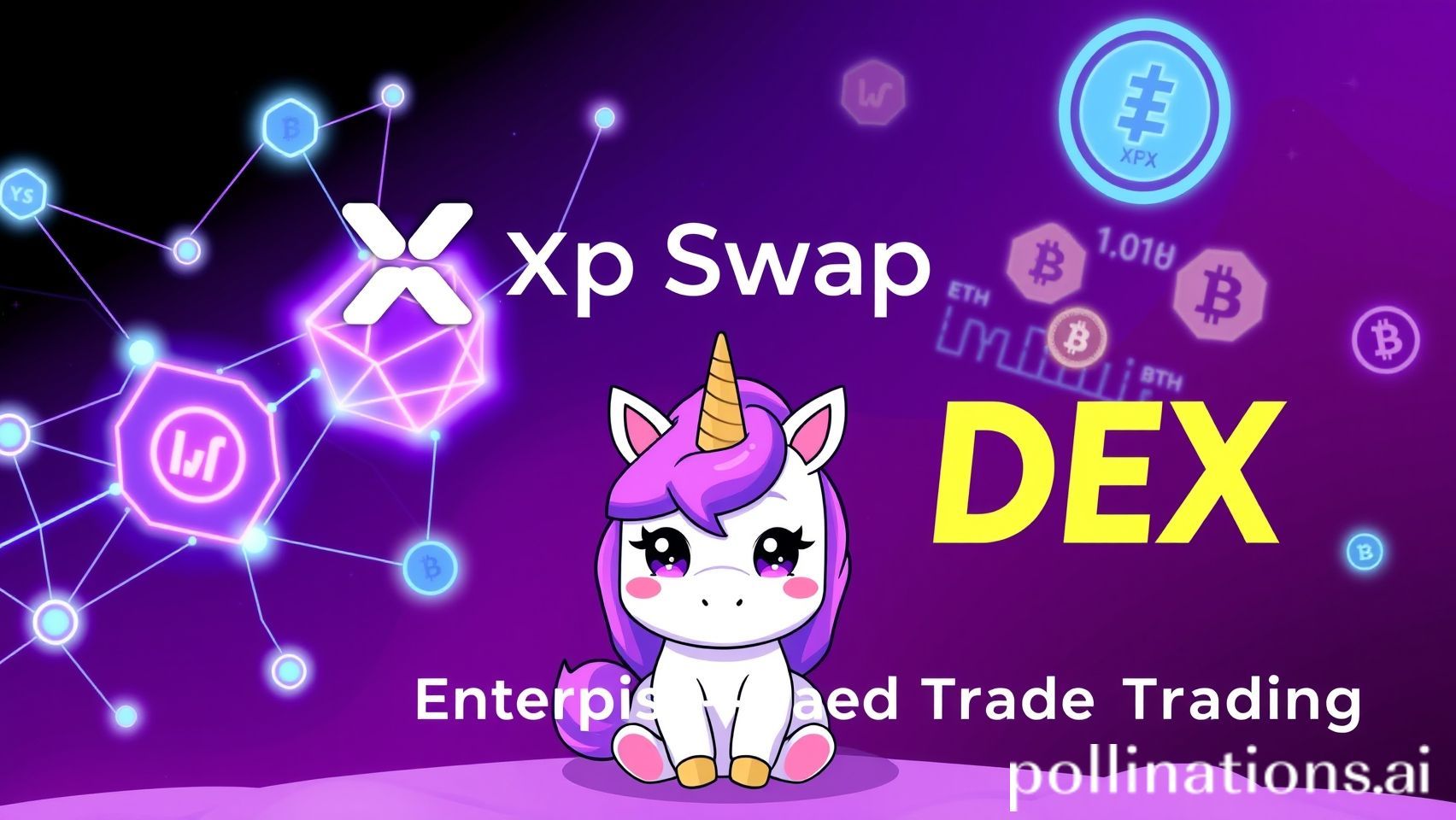Introduction
The Web3 ecosystem has evolved dramatically over the past few years, with cross-chain interoperability emerging as one of the most critical infrastructure components for decentralized finance (DeFi) and blockchain applications. As the XpSwap DEX platform demonstrates through its advanced multi-network architecture, the integration of robust bridge technologies and reliable RPC (Remote Procedure Call) services forms the backbone of modern decentralized exchanges and DeFi protocols.
This comprehensive research analysis examines the current landscape of Web3 bridge technologies, RPC infrastructure services, leading platforms, and the growing ecosystem of free and open-source solutions that are democratizing access to blockchain development tools.
Understanding Web3 Bridge Technologies
Web3 bridges serve as the critical infrastructure that enables seamless asset transfers and communication between different blockchain networks. Unlike traditional centralized exchanges that require users to trust intermediaries, blockchain bridges facilitate trustless or trust-minimized cross-chain transactions.
Types of Bridge Architectures
Lock and Mint Bridges operate by locking tokens on the source chain and minting equivalent representations on the destination chain. This approach is widely used for major token transfers between Ethereum and Layer 2 solutions, providing a secure method for cross-chain asset movement while maintaining the original token supply integrity.
Burn and Mint Bridges function similarly to lock and mint systems, but tokens are burned on the source chain rather than locked. This approach provides additional security guarantees for certain use cases by permanently removing tokens from circulation on the source network, ensuring that the total supply across all chains remains constant.
Atomic Swaps enable direct peer-to-peer exchanges between different cryptocurrencies without requiring a trusted third party. While this technology offers excellent security properties, it is currently limited to specific blockchain pairs that support compatible scripting capabilities and hash time-locked contracts.
Optimistic Bridges utilize fraud-proof mechanisms similar to optimistic rollups, providing faster transactions with a challenge period for security. These bridges assume transactions are valid by default but allow for disputes during a designated time window, balancing speed and security requirements.
Zero-Knowledge Bridges leverage ZK-proofs for enhanced privacy and security, though they are currently more complex to implement and maintain. These bridges use cryptographic proofs to validate cross-chain transactions without revealing sensitive transaction details, representing the cutting edge of bridge technology.
Leading Web3 Bridge Platforms
Synapse Protocol stands as one of the most established cross-chain bridge protocols in the ecosystem, supporting over 20 blockchains with more than billion in total volume processed. The platform offers both bridging and cross-chain AMM functionality, making it a comprehensive solution for users seeking multi-chain liquidity access.
Multichain, formerly known as AnySwap, represents a leading cross-chain router protocol that supports 80+ blockchains and has facilitated over 00 billion in cross-chain transactions. The platform is known for its robust validator network and institutional adoption, making it a trusted choice for large-scale cross-chain operations.
LayerZero operates as an omnichain interoperability protocol that enables seamless communication between different blockchains. Rather than functioning as a bridge itself, LayerZero provides the foundational infrastructure for building cross-chain applications, offering developers a flexible framework for creating interoperable DeFi protocols.
Stargate Finance, built on LayerZero infrastructure, functions as a fully composable liquidity transport protocol that allows instant guaranteed finality cross-chain transfers. The platform addresses the liquidity fragmentation problem by enabling unified liquidity pools across multiple blockchain networks.
Wormhole serves as a generic message passing protocol that connects multiple blockchain ecosystems, supporting not just token transfers but arbitrary data and smart contract calls. This versatility makes Wormhole particularly valuable for complex cross-chain applications that require more than simple asset transfers.
RPC Infrastructure Services Analysis
Remote Procedure Call (RPC) services form the communication layer between decentralized applications and blockchain networks. As DeFi protocols like XpSwap require real-time data access and transaction broadcasting, reliable RPC infrastructure is essential for maintaining platform performance and user experience.
Commercial RPC Providers
Infura, owned by ConsenSys, stands as one of the most widely used Ethereum infrastructure providers, offering reliable APIs for Ethereum, IPFS, and Layer 2 networks. The service supports over 400,000 developers with 99.9% uptime guarantees, making it a cornerstone of the Ethereum development ecosystem.
Alchemy provides enhanced APIs with debugging tools, real-time monitoring, and advanced analytics capabilities. The platform is known for superior performance and developer-friendly features, supporting multiple EVM chains with specialized tools for NFT and DeFi development.
QuickNode offers global RPC endpoints with low latency and high availability across 20+ blockchains. The service provides specialized endpoints for NFT and DeFi applications, catering to the specific needs of different blockchain use cases with optimized performance characteristics.
Moralis combines RPC services with Web3 APIs, offering authentication, real-time database syncing, and cross-chain functionality in a single integrated platform. This comprehensive approach simplifies Web3 development by providing multiple essential services through a unified interface.
Ankr provides distributed RPC services across multiple geographic regions, offering both free and premium tiers with advanced caching and load balancing capabilities. The platform focus on global distribution ensures low latency access for users worldwide.
Open Source and Free RPC Solutions
The democratization of blockchain access has been significantly advanced by free and open-source RPC solutions that enable developers to build and deploy DeFi applications without substantial infrastructure costs. These solutions range from public endpoints provided by blockchain networks to self-hosted node software.
Public RPC Endpoints
Many blockchain networks provide free public RPC endpoints for development and light usage. Ethereum Mainnet offers multiple public endpoints available through ethereum.org documentation. Polygon maintains official RPC endpoints with rate limiting for fair usage among developers. Binance Smart Chain provides free RPC access through official BSC documentation, while Avalanche offers public API endpoints for C-Chain and subnet access.
Self-Hosted Solutions
Geth (Go Ethereum) represents the official Ethereum client implementation, allowing developers to run their own full nodes and RPC endpoints. While this approach provides complete control over infrastructure, it requires significant technical expertise and resources to maintain properly.
Erigon offers a more efficient Ethereum client optimized for speed and storage, providing faster sync times and lower resource requirements compared to Geth. This client is particularly valuable for developers who need to run full nodes but have limited hardware resources.
Nethermind operates as a .NET-based Ethereum client known for excellent JSON-RPC performance and enterprise features. The client offers robust performance characteristics and is well-suited for institutional deployments requiring high reliability.
Besu serves as an open-source Ethereum client developed by ConsenSys, offering enterprise-grade features and permissioned network support. This client is particularly valuable for organizations requiring compliance features and private network capabilities.
Cross-Chain Bridge Security Considerations
The security of cross-chain bridges remains one of the most critical challenges in the Web3 ecosystem. Historical incidents have demonstrated the importance of robust security measures and proper risk assessment, with bridge exploits accounting for billions in losses across the DeFi space.
Common Attack Vectors
Smart Contract Vulnerabilities represent the most significant risk category for bridge protocols. Bugs in bridge smart contracts can lead to catastrophic losses, as demonstrated by various bridge exploits that totaled over billion in 2022. These vulnerabilities often arise from complex multi-chain logic and insufficient testing across different network conditions.
Validator Set Attacks pose serious risks for bridges relying on external validators. These bridges become vulnerable to collusion or compromise of the validator network, particularly when validator sets are small or geographically concentrated. The economics of validator incentives and penalties play a crucial role in preventing such attacks.
Oracle Manipulation presents another significant threat vector for bridges depending on price oracles for asset valuation. Attackers can exploit oracle manipulation to artificially inflate or deflate asset prices during bridge operations, leading to incorrect minting or burning of bridged tokens.
Governance Attacks can occur when bridges implement governance mechanisms that may be vulnerable to hostile takeovers of governance tokens. These attacks can result in malicious changes to bridge parameters or even complete control of bridge funds.
Integration with XpSwap Ecosystem
The XpSwap DEX platform exemplifies best practices in Web3 infrastructure integration, demonstrating how modern DeFi protocols can leverage advanced bridge technologies and RPC services for optimal user experience. The platform comprehensive approach to multi-chain support showcases the practical implementation of theoretical bridge and RPC concepts.
Multi-Network Architecture
XpSwap support for Ethereum, BSC, Polygon, Arbitrum, Optimism, and the native Xphere blockchain showcases the importance of comprehensive multi-chain infrastructure. The platform cross-chain bridge functionality enables seamless asset transfers while maintaining security and efficiency through careful selection of bridge protocols and robust fallback mechanisms.
Advanced RPC Integration
The platform real-time price feeds, instant transaction processing, and MEV protection systems rely heavily on robust RPC infrastructure. This demonstrates the critical role of reliable blockchain connectivity in DeFi operations, where even brief service interruptions can result in significant user experience degradation or financial losses.
Future Trends in Cross-Chain Infrastructure
The Web3 infrastructure landscape continues to evolve rapidly, with several emerging trends shaping the future of cross-chain interoperability and RPC services. These developments promise to address current limitations while introducing new capabilities for decentralized applications.
Intent-Based Architectures represent the next generation of bridge protocols, moving toward systems where users specify desired outcomes rather than specific execution paths. This approach allows for more efficient and user-friendly cross-chain experiences by abstracting away the complexity of multi-step bridge operations.
ZK-Powered Bridges utilize zero-knowledge proof technology to enable more secure and private cross-chain transfers. Projects like Polygon zkEVM and StarkNet are leading the development of ZK-powered bridge solutions that can provide mathematical guarantees of security while maintaining user privacy.
Unified Liquidity Protocols are emerging as platforms develop unified liquidity layers that abstract away chain-specific complexities. These protocols provide users with seamless access to liquidity across multiple networks without requiring manual bridge operations or complex routing decisions.
Decentralized RPC Networks represent an important evolution away from centralized RPC providers. Projects like The Graph and Pocket Network are creating decentralized alternatives that offer censorship resistance and improved reliability through distributed networks of node operators.
Challenges and Opportunities
The Web3 infrastructure ecosystem faces several ongoing challenges that present both risks and opportunities for innovation. Scalability solutions must evolve to handle increased transaction volumes while maintaining security and decentralization principles. The development of cross-chain communication standards will be crucial for improving interoperability and reducing the complexity of multi-chain applications.
Regulatory compliance represents an emerging challenge as bridge operators and RPC providers must navigate evolving regulatory landscapes while maintaining the decentralized principles that define Web3. User experience improvements remain essential for mainstream adoption, requiring continued efforts to simplify cross-chain interactions and hide infrastructure complexity from end users.
Conclusion
The Web3 infrastructure ecosystem, encompassing bridge technologies and RPC services, represents the foundational layer upon which the future of decentralized finance is being built. From established commercial providers to innovative open-source solutions, the landscape offers diverse options for developers and users seeking reliable cross-chain functionality.
Platforms like XpSwap demonstrate the practical implementation of these technologies, showcasing how modern DeFi protocols can leverage advanced infrastructure to provide seamless multi-chain experiences. As the ecosystem continues to mature, the integration of robust security measures, performance optimization, and user-centric design will remain crucial for the continued growth and adoption of Web3 technologies.
The ongoing development of free and open-source solutions ensures that the benefits of blockchain technology remain accessible to developers worldwide, fostering innovation and democratizing access to advanced financial infrastructure. As we look toward the future, the convergence of improved security, enhanced performance, and simplified user experiences will drive the next wave of DeFi innovation and mainstream adoption.
Community Links
Stay connected with the XPS ecosystem and blockchain development community:
• Blog: https://xpsproject.blogspot.com/
• Telegram: https://t.me/xpscommunity
• X (Twitter): https://x.com/xpsproject
• News Portal: https://eng.storydot.kr/
For more technical information about XpSwap infrastructure and cross-chain capabilities, visit the comprehensive documentation at https://xpswapmvp.replit.app/documentation



